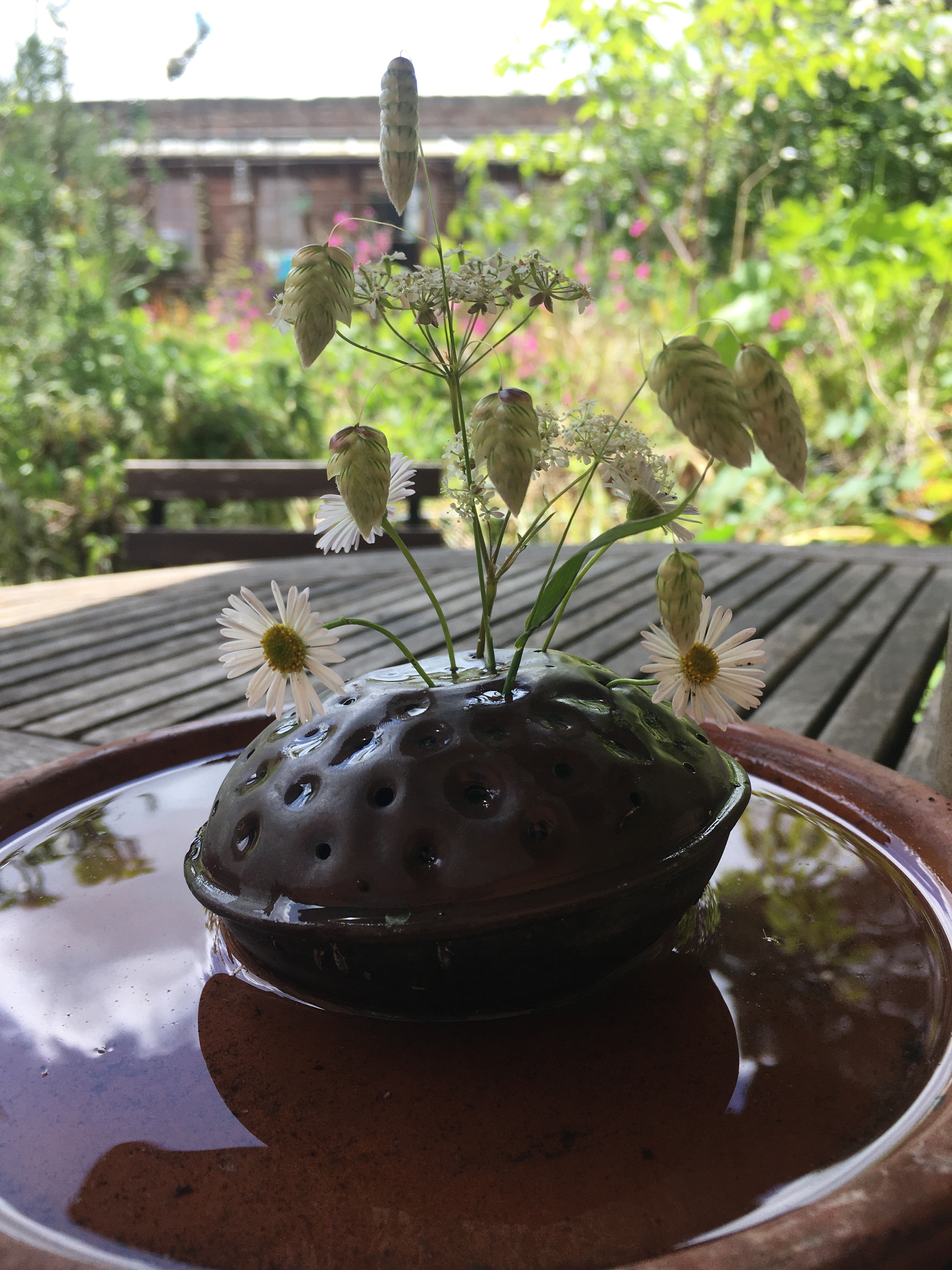Saturday 19th February 2023, was all about rose and tree planting at Martin and Judy’s. The planting list consisted of :-
- Ten bare root Rosa canina at 1.5 m spacing along the boundary fencing .
- The Generous Gardener , which is a really vigorous and healthy climbing rose. Pale pink flowers which regularly repeat over the summer, are followed by vibrant orange rose hips.
- Paul’s Himalayan Musk. This rose use to scramble at a great rate through the trees in Martin and Judy’s previous garden, and hopefully it will now clamber over the perimeter fence of their new home.
- Six Amelanchier canadensis . Martin and Judy’s previous garden was full of trees, and from the outset , we knew trees had to be on the planting plan. Amelanchier canadensis is a great choice for a small garden , as they have an open habit, beautiful blossom, great autumn foliage colour, and fruit which blackbirds adore.
I firmly believe the mix of the ten native and two cultivated roses will blend beautifully together. And the Amelanchier instantly provided a landing pad to bring robins into the garden.
Rosa canina is my choice of perimeter planting at home. Pale pink flowers cover this climber in early summer, followed by a wealth of rose hips from early autumn. Within a couple of years of planting, it is now a dense thicket, where sparrows regularly nest in spring amongst the thorny stems.
As Martin and Judy’s trees and roses have only just been planted , I thought some images from my garden, would show how they will look in a couple of months time. The first two images are of Amelanchier, and the third image is Rosa canina with its red hips in late summer.



And now for a visual round up to detail the short history of this garden. The images below are taken from my blog ( A new garden.part 1 )
.




The second blog Martin and Judy’s garden ( part 2 ) found the garden had definitely moved on from my first visit.






The remaining images are from last weekends visit. Snowdrops and crocus are flowering, and hundreds of bulbs are emerging. This newly planted garden really has a sense of age already. There is so much to see, it is a fascinating place to be.









Once the planting was completed, Judy and I sat with a coffee, taking it all in.
” what do you think of the garden Sally ?” asked Judy, and my reply was “it is perfect and beautiful ”
” can you explain that ” asked Judy, and my reply was ” no, I don’t think I can , it just is “
I have now given a little more thought to my response, and it really is quite simple. I am fascinated by the amount of beautiful native flowers that the growing medium of builders rubble and top soil is throwing up.
I now take my wild flower book , which enables me to identify what has germinated. Many of the seedlings growing in the top soil are plants that grow in waste land, footpaths and fields. And many are beautiful in their colour and possess nectar rich qualities for insects and birds. They are slowly filling the open spaces, between the cultivated plants which we chose to plant.
I noticed on Saturday, that the two raised beds had been filled with topsoil from different locations ( which I find really interesting) . One of the raised beds contains weld, plantain, poppies and forget me nots, whereas another raised bed is more of what I consider pernicious weeds, which include broad leaf doc , couch grass and and sow thistles thistles .
I do and will continue to remove the pernicious perennials, but I will retain as many of the less pernicious native seedlings. It will make for a fascinating garden planting mix of cultivated and native plants. I will just need to keep a keen eye on which plants are more competitive for growing space, and thin them out accordingly as I go.
So combine all of these thoughts , and that’s why this garden is beautiful and perfect, as we have invited nature in, right from the outset.
Part four will be along in a month .
